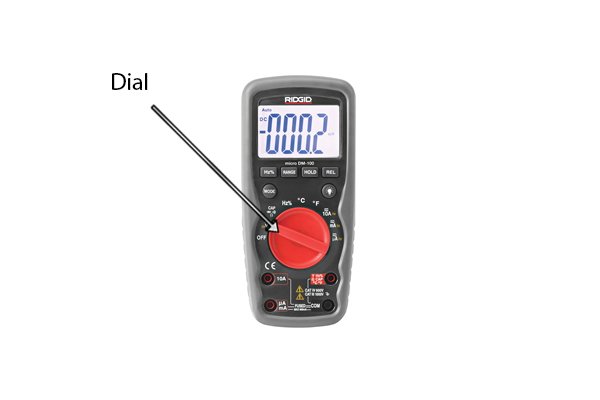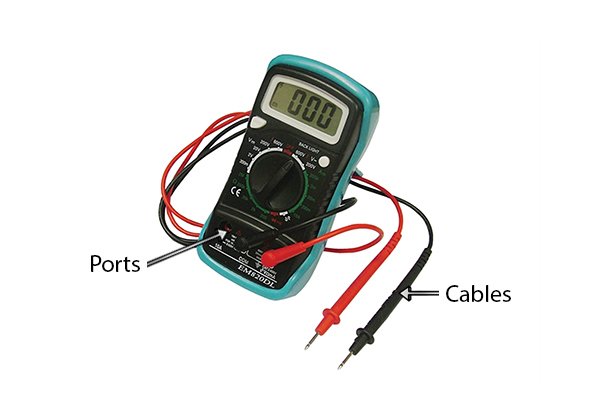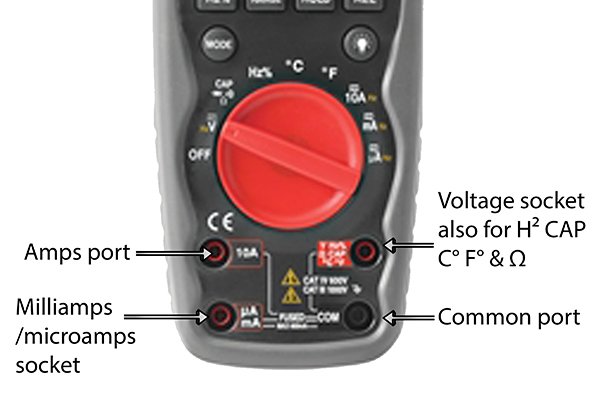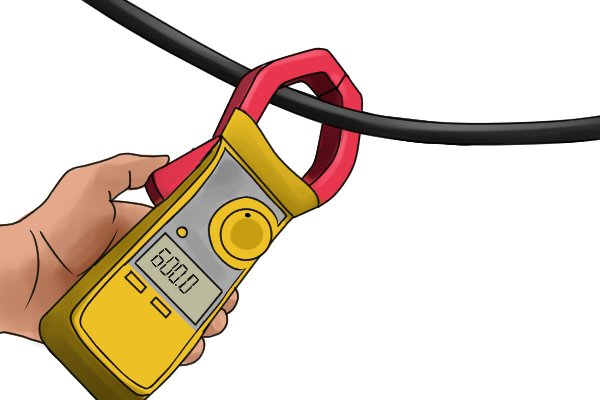How do meters work? |
||||
| Shop for Multimeters | ||||
How does a multimeter work? |
||||
 |
A digital multimeter (DMM) has a dial which allows you to manually select the function of the instrument.
Some auto-ranging multimeters do not have a dial. Instead, a handful of buttons are used to access its functions. |
|||
 |
The multimeter will be supplied with two test cables with a probe at the end. One of these will be black and the other red.
There will usually be three or four colour coded sockets for these cables to plug into. The black plugs into the black socket named COM (or common) for all applications, and the red plugs into any one of the red sockets.
These red sockets will be labelled for volts or amps, with the amps possibly further broken down into A and μA (amps and micro amps). |
|||
 |
The sockets may have extra labels to indicate where the red cable should be placed for measuring the appropriate parameters, such as resistance and temperature, and is dependent on the multimeter. |
|||
How does a clamp meter work? |
||||
 |
The main body of a clamp meter works in the exact same way as a multimeter, the only difference between the two is the addition of the clamp, which enables the testing of current without direct contact to the electrical supply. This is beneficial because you do not need to break the circuit to insert the test leads in series. |
|||
 |
The clamp detects the current by measuring the magnitude of the electromagnetic force (emf) generated by the current in a conductor, when the clamp is surrounding the conductor fully. The emf emitted by the cable provides a proportional voltage in the jaws of the clamp, which is measured and calibrated into amps for the reading. A current in a conductor will generate a proportional emf (electromagnetic force), which is sensed by the clampmeter (the jaws of the clampmeter have to fully surround the conductor). The emf emitted by the cable produces a proportional voltage in the coil located inside the jaws. This voltage is measured and calibrated to readout in Amps. |
|||






